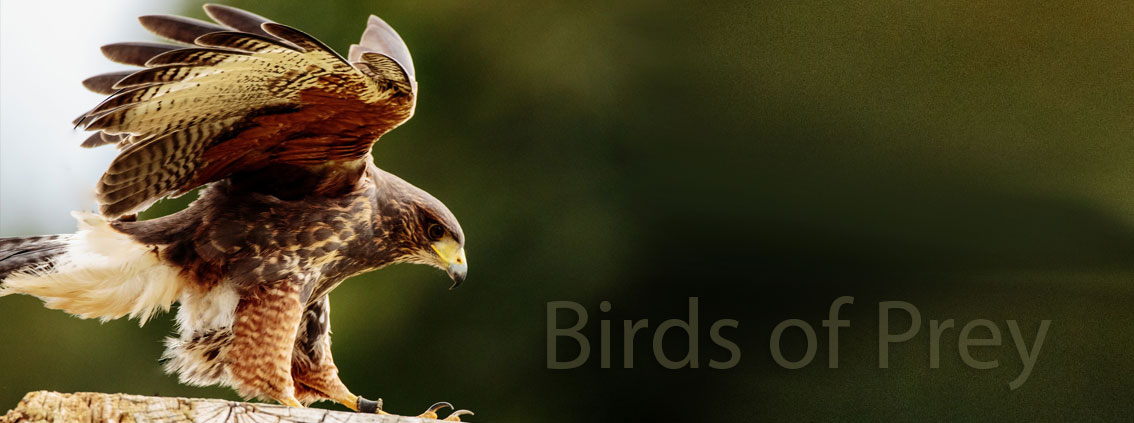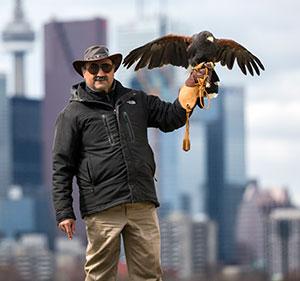Did you know that falconry is an environmentally friendly, humane, and effective way to prevent pest birds from nesting and gathering on piers, warehouses, and other commercial, industrial, or residential buildings?
When it comes to effective bird control methods in Toronto, here is what you need to know about using birds of prey to deter birds from roosting on your property.

How Are Birds of Prey Used for Pest Control?
The main reason birds of prey are used to control pest birds is because it is a humane way of bird control and it takes advantage of the natural relationship between predators and their prey. Birds of prey are used as natural way to control behavioral patterns of pest birds such as gulls (seagulls), pigeons, geese, sparrows, and starlings.
At Hawkeye, our raptors do not “hunt” to kill the pest bird, but instead, they are trained to scare away pest birds from a particular area. As a result, pest birds learn that that area is not safe and will no longer nest or roost in the area where the predator is seen.
What Birds Are Used as Birds of Prey?
There are several types of birds of prey used with pest and wildlife population control.
Hawks are a common bird trained for such a role because of their ability to adapt to targeted prey and the environment. The medium-sized accipiter hawks such as goshawks, coopers, and sharp-shinned have amazing eyesight and can be trained for “ambush-type” jobs. They use their long tails to control flight in tight quarters. The red-tailed, red-shouldered, and broad-winged hawks known as buteos are excellent for prey control in large areas.
Quick flying techniques make the falcon a master bird of prey. While falcons and hawks are often mistaken for one another, the falcon has a longer wingspan and usually looks and finds their prey while in flight. This allows them to use their speed and agility to swoop down undetected by their prey.
Using their extraordinary hearing, owls can detect their prey under the blanket of darkness or in low light areas. The structure of their feathers gives them the added element of surprise as their prey rarely hear them coming! The barn, great horned, and Eurasian hawk owls can be trained to be used in falconry.
At Hawkeye, we will frequently use Harris Hawks as they are very adaptable, fairly easy to train, and can be trained to “hunt” with other Harris Hawks.
What Does Falconry for Bird Control Entail?
For any form of falconry to be successful, it takes identifying the problem (roosting, nesting, structural damage) and the type of bird that requires controlling (pigeon, starling, geese). Each type of bird of prey has its own natural defense system in accordance with the type of prey targeted.
A trained bird of prey will use its presence, appearance, and tactics to warn off, scare, and deter the targeted prey from returning to the area. Trapping, shooting, and use of loud noisemakers are not always feasible or viable.
Contact Hawkeye for Bird Control in Toronto
Hawkeye Bird and Animal Control is a Certified Wildlife Control Professional (CWCP) company with a falconry permit. We offer natural bird control solutions to residential, commercial, industrial properties and piers in the Greater Toronto Area and Golden Horseshoe. Our bird control solutions include birds of prey, netting, and Bird-Shock Flex-Track, among other deterrent methods.
Need expert advice? Email us at [email protected] or call us at (416) 429-5393 or toll-free at 1-833-833-4295














